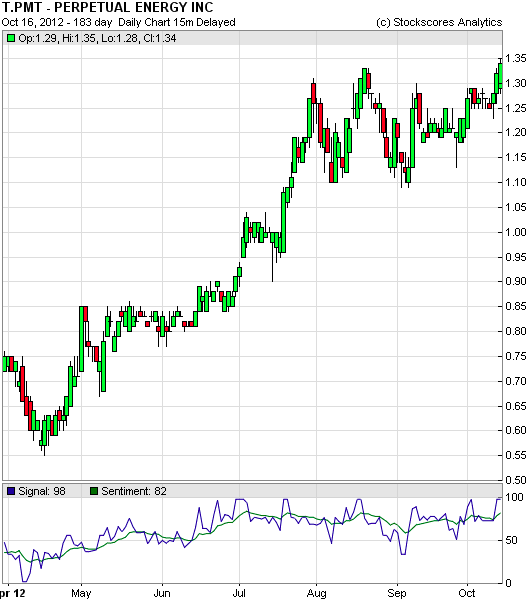![]()
![]()
PEOPLE BUY WHAT THEY KNOW
You can analyze any stock with a ruler, learn this lesson plus get my weekly market analysis in the Market Minutes video. You can watch this week’s video on Youtube by clicking here. To receive email alerts any time I upload a new video, subscribe to the Stockscores channel at www.youtube.com/stockscoresdotcom.
Here is an excerpt from my upcoming book, The Mindless Investor, How to Make Money in the Market by Overcoming Your Common Sense. This piece is from the chapter, Avoid Being Yourself.
Trading can be a bit boring. You’ll spend a lot of time waiting for a new trading opportunity to come along or for an existing trade to develop. I’m not complaining-trading can be very exciting as well-but it’s nice to get out from behind my screens once in a while. Speaking about trading the markets at investor conferences is a good change of pace for me and something I do a few times a year.
While I’m at these conferences to teach the audience about trading, I also learn a lot by talking to investors. Since I do presentations in many different places, I have started to see patterns in how people approach the markets. These patterns shed light on some of the reasons why many investors have trouble beating the market.
People Buy What They Know
People tend to buy what they and their social network know. The main industries of a region are often the focus for investors in that area. Vancouver, Canada, is a centre for mining exploration companies, a focus that evolved out of the Vancouver Stock Exchange’s function as a hub for raising money for speculative mining deals. Some of the world’s biggest mining investment shows are held in Vancouver, so it’s not surprising that when I do a presentation in Vancouver the questions I’m asked are almost entirely about mining stocks.
Take a one-hour flight east to Calgary, Canada, and the questions now focus on oil and gas stocks. Calgary is Canada’s epicentre of the energy industry; the tall glass towers that make this city’s skyline so dramatic are home to many energy company head offices.
You won’t find the people in Vancouver and Calgary to be a whole lot different: they speak with the same Canadian accent and are as polite as Canadians are reputed to be. Both cities are wealthy by global standards, and the population of each tends to be more educated than most. Both cities love their respective hockey teams and have hosted successful Winter Olympics: Calgary in 1988 and Vancouver in 2010.
But despite so many similarities, they have a very different focus in their investment approaches. I have met countless Vancouverites and Calgarians who have shown me their portfolios, and it’s not uncommon to find that they’re 100% invested in the native industry of their city. Most portfolio managers would be shocked to see a person’s entire retirement portfolio invested in speculative mining or energy stocks, yet this is not uncommon in these cities. I once met a guy in Vancouver who had shares in over 100 mining stocks and not a single stock outside of that sector.
This lack of diversity can create great fortunes when there’s a boom in that industry. I’ve seen it happen many times. The mining industry enjoyed great success over a number of years as the prices of gold and silver surged to record highs from 2006-2011. I expect that the Mercedes and BMW dealerships enjoyed a lucrative business in Vancouver during those years, funded by penny stock profits.
Mining and energy tend to run in boom-bust cycles making long-term success fleeting. When a sector is hot, it’s easy to make money. When it ceases to be the trendy place to invest, these stocks can languish for years with negative returns. During these times, sector-weighted investors struggle through financial and emotional turmoil, watching seven- and eight-figure portfolios shrink to five- or six-figure amounts. I know people who have gone from a net worth of over $20 million to under $1 million in the span of a year when the sector they were invested in went from hot to not. These sorts of trend reversals flood the market with slightly used Mercedeses and BMWs.
In a hot market, everyone’s an expert. A person who knows a little bit about oil and gas, enough to pick a few stocks with some decent potential, can make a lot of money. These people don’t make money because they have exceptional analytical prowess, but simply because they rode a hot market. When the trend reverses, they go back to looking like neophytes. Even the most knowledgeable of sector investors look dumb when the trend is down. Profits in these markets are just short-term loans for the person who fails to realize that you have to sell and move on to the next hot market.
![]()
This week, I thought I would share a few stocks that Stockscores users have highlighted for me. These are from emails that I received today.
![]()
1. T.PMT
A very nice Bottom Fishing chart set up, the stock broke its downward trend early this year and has been building a rising bottom over the past few months. It is now starting to break through resistance from an optimistic ascending triangle chart pattern. Support at $1.22.

2. TTWO
TTWO is building optimism and starting to move through resistance. The recent price volatility makes it more likely that the stock will pull back as it is a sign that investors are somewhat uncertain about the stock but also eager to buy. Support at $10.30.

I hope those of you near Vancouver or Calgary will join Michael Campbell, host of MoneyTalks, and I for an evening discussion of the market and how I approach it. For those who are not familiar with MoneyTalks, it is an excellent financial radio show that is broadcast in most markets in Canada. If it is not broadcast in your city it is available for free download from iTunes as a podcast.
I plan to highlight some of the lessons from my new book, The Mindless Investor. This book is not yet available (it is being printed right now) and those who attend this event will be the first to receive one of the first 1000 copies of the book. Attendees will also receive:
– Attendance at the event
– Two months of my daily newsletter (value $118, new subscribers only)
– One month access to Stockscores.com (value $29, new subscribers only)
Some of the important lessons from my book:
– You must think like a trader to invest in the stock market today
– Diversification is a dangerous way to manage risk
– The stock market is not fair
– You can analyze any stock or market in 10 seconds (I will show you how)
Past MoneyTalks events have been sell outs and we expect this one to be no different, don’t wait too long to purchase tickets.
For more information, click on the appropriate link below:
Evening with Michael Campbell and Tyler Bollhorn, Calgary Oct 29 and Vancouver Oct 30
To get 20% off of the ticket price, use the special offer code SSTB2013 at checkout.
References
- Get the Stockscore on any of over 20,000 North American stocks.
- Background on the theories used by Stockscores.
- Strategies that can help you find new opportunities.
- Scan the market using extensive filter criteria.
- Build a portfolio of stocks and view a slide show of their charts.
- See which sectors are leading the market, and their components.
Disclaimer
This is not an investment advisory, and should not be used to make investment decisions. Information in Stockscores Perspectives is often opinionated and should be considered for information purposes only. No stock exchange anywhere has approved or disapproved of the information contained herein. There is no express or implied solicitation to buy or sell securities. The writers and editors of Perspectives may have positions in the stocks discussed above and may trade in the stocks mentioned. Don’t consider buying or selling any stock without conducting your own due diligence.












